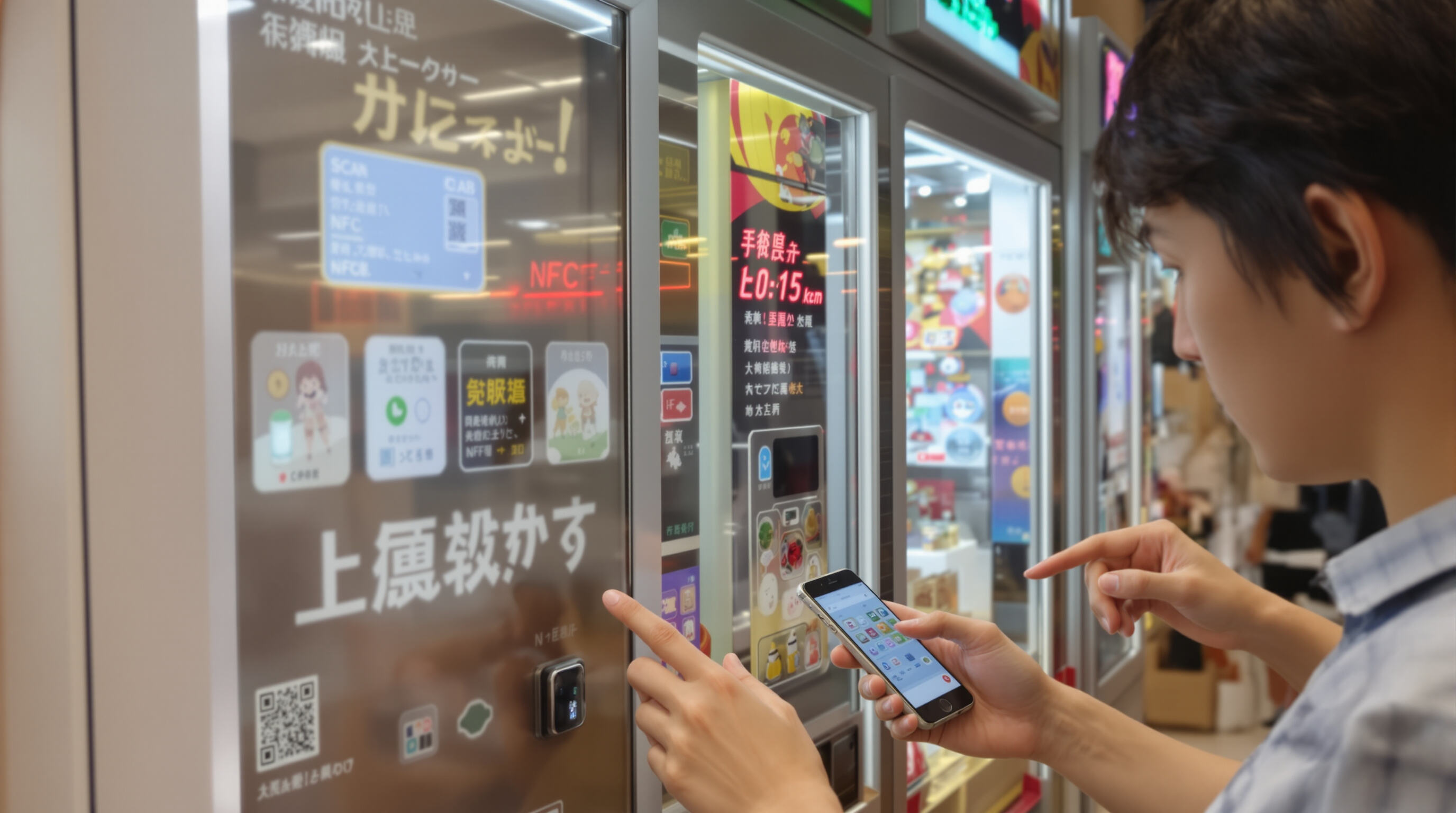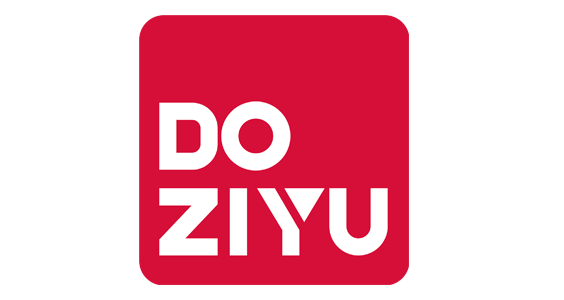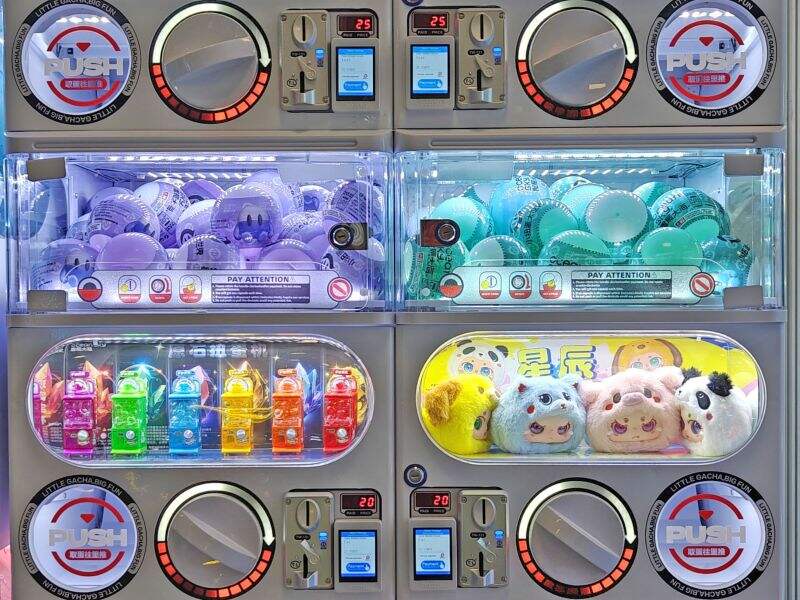Meeting Consumer Demand with Cashless Payment Integration
Rising Expectations for Digital Payments in Entertainment Vending
These days, people want their transactions to go smoothly without any hassle when they're having fun at places like arcades. According to Market Data Forecast from last year, around three out of four young folks under 35 who visit arcades would rather pay digitally than hand over cash. We're seeing the same pattern across stores everywhere else too. The U.S. Commerce Department says something pretty interesting about this trend: almost half of all face-to-face purchases now happen through contactless methods. Arcade owners who have started using things like QR codes, those little tap-and-go NFC tags, and mobile wallet options report significantly better customer interaction compared to old fashioned coin operated machines. The difference? About 19 percent boost in engagement rates. Younger generations just grew up expecting everything to work through apps these days.
How Mobile and Contactless Payments Enhance User Convenience
Cashless options eliminate coin scarcity and enable impulse purchases through faster transactions. Patrons spend 27% more per session when using saved payment methods compared to cash, as digital systems reduce transaction time by 62%. Features like auto-replenishment of virtual credits further boost repeat usage.
Case Study: Transition from Coin-Operated to Cashless Systems in Japanese Arcades
In Osaka's Nipponbashi Entertainment District, things took a turn for the better after switching out old machines for these new hybrid payment gachapon units. Vandalism went down around 41 percent while revenue actually jumped up about 33% in just half a year. Arcade owners are saving serious money too - roughly $18k each year because those annoying mechanical coin slots that used to get stuck all the time are gone now. The results were so good across the district that other places started copying them. Now looking at Japan as a whole, most arcades have gotten on board with mobile payments somehow. About three quarters of them offer this option according to recent reports, showing how fast technology can change an industry when it works well.
Global Trends in Contactless Payment Adoption for Gachapon Machines
Asia-Pacific leads cashless adoption at 68%, followed by Europe (52%) and North America (47%). High-traffic tourist venues like Singapore’s Universal Studios deploy gachapon machines in different sizes with unified payment platforms, enabling seamless cross-location redemptions. This flexibility supports operators in capitalizing on microboutique retail trends while meeting evolving consumer preferences.
Improving User Experience Through Seamless Payment Solutions

Reducing Friction with QR Codes and NFC in Gachapon Transactions
QR codes and NFC tech cut down on physical contact during transactions, which saves people about 40% of their time compared to dealing with coins. According to research done by Primidigital on mobile vending interfaces, NFC basically gets rid of those frustrating moments where cards get stuck or money gets jammed inside machines something that happens a lot in busy tourist spots. Makes sense really, since most folks just want to grab what they need quickly. A recent survey found that around three out of four users care most about how fast they can complete a purchase when interacting with entertainment vending machines these days.
Case Study: Tokyo Disneyland’s App-Integrated Gachapon Machines
At Tokyo Disneyland, they've made getting those coveted gachapon prizes much smoother by linking payments directly to their official park app called Disney Magic Pay. Visitors just need to point their phones at QR codes on the machines to get their capsules dropping without ever touching actual money. The change cut down waiting times during busy hours by almost half, according to reports, while also letting folks gather digital points they can use later. What's interesting is these new payment-enabled machines come in various sizes too, showing how going cashless really helps places maximize space when dealing with crowds.
Designing Intuitive Interfaces for Diverse Age Groups and Tech Literacy Levels
Making these machines accessible really helps them catch on in the market. The best ones mix things up with color coded QR areas alongside physical buttons for folks who might not be as comfortable with touchscreens, plus they throw in some animated guides for younger people who grew up with smartphones. Take pediatric clinics for instance, their machines have huge icons on screen so kids can easily tap what they want, and parents get text messages asking for permission before any purchase goes through. Meanwhile, the versions placed at tourist spots come with confirmation messages in several languages so everyone knows exactly what they're paying for. Because of this flexibility, gachapon machines now work well across different age groups and cultural backgrounds, from teenagers fluent in digital tech to tourists visiting Japan for the first time.
Driving Operational Efficiency and Revenue Growth
Increased Transaction Volumes and Reduced Maintenance Costs
Gachapon machines that accept multiple payment methods see about 42 percent more transactions compared to those that only take coins, according to research from Golhar in 2024. These machines come in various sizes which makes them suitable for placement almost anywhere busy people hang out these days. We've seen them pop up at train stations, mall entrances, and even outside convenience stores without causing much disruption. Maintenance is another area where things get interesting. Traditional coin validators need someone to check on them every week, but the newer cashless versions cut down on this hassle. Businesses report around 60% savings on maintenance expenses when switching over, plus transactions happen roughly three and a half times quicker than with old school coin mechanisms.
Case Study: 30% Revenue Boost in Osaka Convenience Stores with Multi-Payment Gachapon Units
A 2024 implementation of hybrid payment systems across 38 Osaka stores demonstrated operational synergies. Compact units with credit card readers generated ¥2.4M monthly revenue versus ¥1.8M for traditional machines, despite occupying 23% less floor space. Owners reported an 83% reduction in coin collection costs and 41% fewer service calls compared to legacy systems.
Using Transaction Data to Optimize Inventory and Placement Strategies
Advanced analytics from digital payments enable real-time demand forecasting, with early adopters achieving 97% capsule stock accuracy. Venues using time-of-day purchase patterns increased per-machine revenue by 28% through strategic placement rotations. Payment type frequency data (38% mobile wallets vs. 29% contactless cards) further informs machine configuration preferences by location type.
Expanding Market Reach with Flexible Sizing and Multi-Payment Gachapon Machines
How Gachapon Machine Different Sizes Enable Deployment in Non-Traditional Venues
The smaller size and modular nature of modern gachapon machines are really opening up new possibilities when it comes to where these devices can be placed. Back in 2023, the Japan Vending Machine Manufacturers Association did some research and discovered something interesting: about 40 percent of business owners started putting their machines in places that weren't considered good spots before. We're talking about schools, hotels even hospitals! All this became possible once they switched to those compact units that fit within just over a cubic meter. What makes these machines so special is how they take up minimal space without disappearing from sight. Businesses now have options they never had before, which means better placement strategies across different environments.
- Capitalize on underutilized corners in high-traffic areas
- Rotate product assortments based on venue demographics
- Leverage market expansion strategies to match machine size with foot traffic patterns
Integrating Multi-Payment Options in Compact Units for Cafes, Clinics, and Retail Spaces
QR code and NFC integrations resolve the "no coins, no play" limitation of legacy systems. A 2024 Retail Payment Index revealed 72% of consumers prefer hybrid payment-capable machines in small-footprint environments like cafes. Clinic operators report 33% faster transaction completion times with app-based payments compared to cash—critical in time-sensitive settings.
Case Study: Pediatric Clinics Using Small Gachapon Machines with QR Code Payments for Child Rewards
At Osaka Children's Hospital, they've started placing these small gachapon machines (about 28 cm wide) near checkout areas so parents can give their kids rewards through special clinic approved QR codes. Since implementing this system, the hospital saw a massive drop in cash transactions - down around 89% actually. Follow up appointments went up too, climbing about 28% higher over just six months. The staff has observed better behavior from children during treatments lately. A majority of parents, roughly two thirds according to surveys, said the whole incentive approach really helped make those dreaded doctor visits feel less intimidating for everyone involved.
Enhancing Security and Reducing Fraud in Cashless Gashapon Systems
Decline in Vandalism and Mechanical Failures After Digital Transition
Operators report 40% fewer vandalism attempts after adopting cashless systems, according to a 2023 vending industry report. Digital payment integration eliminates coin slots vulnerable to tampering, reducing mechanical failures by 32% across Japanese arcade deployments. The shift minimizes physical interaction points, discouraging malicious damage while lowering maintenance costs.
Encryption and Tokenization in Mobile Payment Integration
Today's cashless payment systems use strong encryption similar to what banks rely on, along with something called dynamic tokenization that replaces actual card numbers with temporary digital codes instead. The combination of these two security layers makes it much harder for anyone to steal payment information when someone swipes or taps their card. This is really important stuff, especially for those small gachapon machines we see in busy stores and malls where lots of people are using them all day long. Most payment companies have started updating their encryption keys automatically about once every 12 hours now. Looking at industry reports from last year, around three out of four NFC enabled vending machines had already switched to this regular key refresh system by mid 2024.
Balancing Security with Privacy Concerns in Digital Transaction Tracking
Transaction monitoring catches around 94% of fraud according to the latest Payment Security Index from 2024, but there remains the issue of privacy regulations when it comes to purchase data. Most modern platforms have started implementing aggregated analytics approaches where they can track spending trends without revealing who made specific purchases. The industry is also seeing recommendations pop up in recent whitepapers suggesting that cashless gashapon network operators should conduct privacy audits every three months or so. These checks help maintain regulatory compliance while still keeping those crucial fraud detection mechanisms intact for business operations.
FAQs
Why are people choosing digital payments over cash in arcades?
People prefer digital payments for their convenience and speed, avoiding the need to carry cash and dealing with coin scarcity.
How do QR codes and NFC improve the transaction process?
QR codes and NFC enable faster and contactless transactions, reducing physical interaction and saving time during purchases.
How do cashless systems impact revenue and maintenance costs?
Cashless systems increase transaction volumes and reduce maintenance costs due to fewer mechanical failures and less frequent checks compared to coin-operated machines.
What security measures are in place for cashless payment systems?
Cashless systems use encryption and tokenization for secure transactions, minimizing risks of data theft and fraud.
Table of Contents
- Meeting Consumer Demand with Cashless Payment Integration
- Improving User Experience Through Seamless Payment Solutions
- Driving Operational Efficiency and Revenue Growth
- Expanding Market Reach with Flexible Sizing and Multi-Payment Gachapon Machines
- Enhancing Security and Reducing Fraud in Cashless Gashapon Systems
- FAQs

 EN
EN
 AR
AR DA
DA NL
NL FI
FI FR
FR DE
DE EL
EL HI
HI IT
IT JA
JA KO
KO NO
NO PL
PL PT
PT RU
RU ES
ES SV
SV TL
TL IW
IW ID
ID VI
VI HU
HU TH
TH TR
TR MS
MS GA
GA LO
LO MY
MY